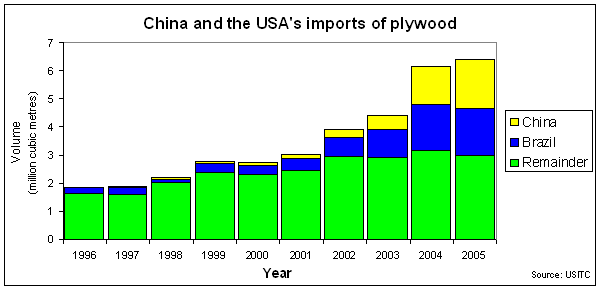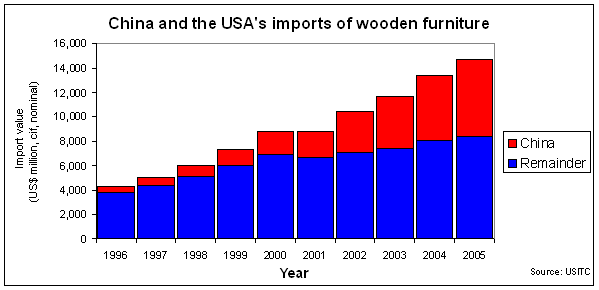|
|
||
|
|
||
|
The United States of America |
||
  |
||
|
The increase in imports from China and Brazil implies a change in the structure of the USA's furniture and plywood industries - and a loss of both tax revenue and employment. The increase does not appear to have affected the share of the US market supplied by other countries (taken as a whole). Whereas imports from Brazil are likely to decline as the Real appreciates against the US dollar, China maintains the exchange rate between the Renminbi/Yuan and the US dollar at an artificial rate. That articificial rate gives China great advantage in gaining a very significant share of the market in countries to which it exports. China's penetration of the USA's market for plywood and furniture is also facilitated by the inclusion of illegal timber - particularly in the surface layer (i.e. the component which gives a product its primary marketing attribute - e.g. okoumé or bintangor plywood, merbau or white oak flooring). Given the probable extent of illegal timber which is either imported by China or obtained from forest (or plantations) within China, the US market and US government should regard all imports of wood-based products from China that are not accompanied by a credible chain of custody certificate demonstrating the products' legality from tree to point of import as likely to be illegal. The technology and management systems required to track timber along the supply chain are simple. Much of China's wood-based products industry has developed in order to supply markets in the USA. Until such time as the USA insists on transparency along the supply chain, the structure and legality of China's wood-based products industry is unlikely to improve. |
||
|
Copyright
globaltimber.org.uk
|
